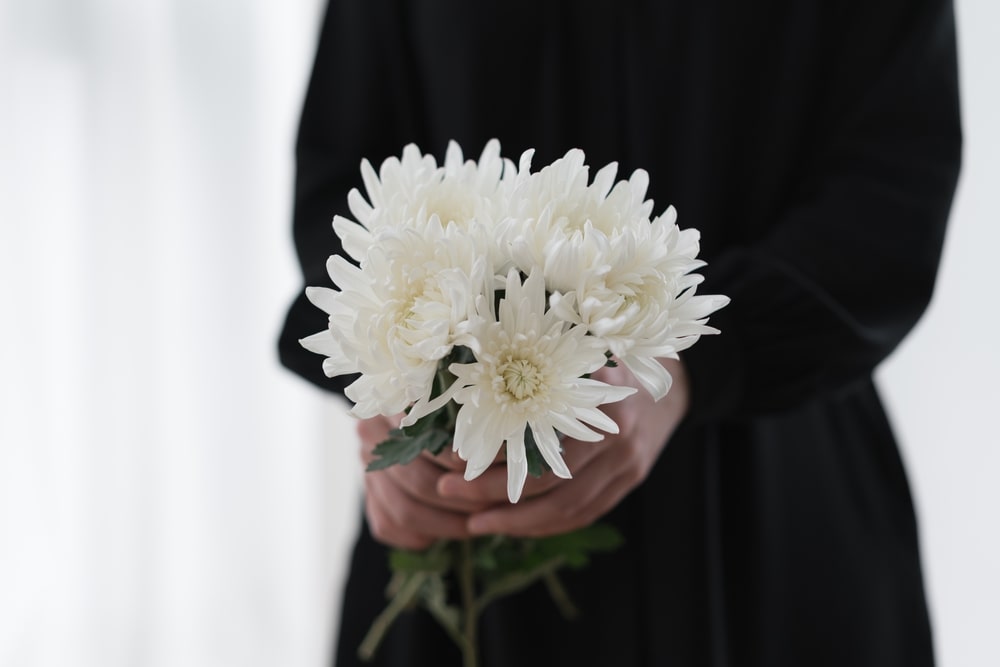In the United States, black is the color most people commonly associate with grief and mourning. However, that’s not true for all cultures. The color of mourning is often deeply rooted in the history and beliefs of a nation and its people, so let’s see which colors represent mourning around the world.
Black

In addition to the United States, black is the color of mourning in most Western nations as well as some other nations. Wearing black is a symbol of sadness, loss, and death. Writings from Ancient Rome reveal that the tradition of donning black after a death was common even in that day.
And while the color black never went out of use, it became particularly popular during the reign of Queen Victoria. Following the death of her husband, Prince Albert, the Queen spent the next 40 years of her life mourning his death. She commonly wore black or other dark colors to symbolize her deep sense of loss. Her example went on to influence many other nations in Europe and North America, leading to a stronger connection to black as a color of mourning.
Like many Western nations, black is also a common mourning color in Japan, Brazil, and Thailand, to name a few. It’s also quite common to see black worn at Jewish funerals.
White

Another very common funeral color around the world is white, particularly in Asia (China, Cambodia, India, etc.) where the people strongly associate with Buddhism or Hinduism.
Universally, white symbolizes purity, innocence, and rebirth. In Buddhism, white is also representative of reincarnation and the circle of life. Similarly, in Hinduism, white is a symbol of light, goodness, spiritual rebirth, and a new beginning. As these religions base many of their core tenets on the life that comes after death, it’s easy to understand why white – as a symbol of rebirth and new beginnings – would be so important at the funerals of loved ones.
There are also examples of white used for mourning in other parts of the world. For example, in 15th and 16th century France and England, bereaved children and unmarried women often dressed in white instead of black. Also, in indigenous Australia, it’s common practice to wear white body paint to show remorse for the loss of a loved one.
Red

One of the least-used mourning colors, red is nonetheless prevalent in a few countries around the world. In South Africa, mourners wear red, though the origins of the practice are heartbreaking. The color represents the apartheid era and the blood that was shed during those years.
Red is also used in Ghana, but there is a condition. Red (often paired with black) is only worn by the deceased’s immediate family; black or white is worn by all other mourners.
On the other hand, never wear red to a funeral in China. Because of its strong association with happiness, cultural tradition forbids the use of red at Chinese funerals.
Purple

Long connected to spirituality and royalty, purple is used during Easter celebrations to represent the pain and suffering of Christ’s crucifixion. For this reason, many Catholics in Brazil, Guatemala, and other Central or South American countries pair purple with black during times of grief.
In Thailand, purple represents sorrow. The color is worn exclusively by widows following the death of a husband; all other mourners wear black.
What if I Don’t Know What Color to Wear to a Funeral?
As you can see, the culture you live in, and in some cases, the religion you follow can have an impact on the mourning colors that are acceptable and expected. And in some countries, there’s a mix of colors, though black and white are the most common threads.

If you aren’t sure what to wear to a funeral, the best thing to do is ask for guidance. You can reach out to the family, a close friend, or even the funeral director. For example, if you haven’t been to a Jewish funeral, contact someone to learn what clothing would be respectful.
In general, it’s good etiquette to avoid bright colors like orange, yellow, green, and blue. Unless you are attending a funeral where red is appropriate, generally avoid it, too.
Did any of these colors surprise you? It’s fascinating to see how mourning colors develop and understand the role they play in helping us mourn the loss of those we love.




